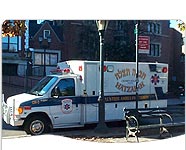 
Knee Injuries
Knee injuries plague people of all ages and athletes in practically every sport. Contact sports like football tend to produce torn ligaments, whereas sports that involve prolong running, such as cross-country and track, produce overuse injuries. You do not have to be an athlete to be susceptible for a knee injury, all you have to do is lose your balance.
Acute knee injuries (caused by being hit or twisted) are a common problem, accounting for 1.3 million visits to United States emergency rooms. Many others are seen in the offices of primary care physicians and orthopedic surgeons.
The Ottawa Knee Rules are a set of criteria that help an emergency physician decide whether or not to obtain an x-ray in a patient with a knee injury. The rules were developed and studied by a group of emergency physicians in Ottawa. The goal was to reduce the number of unnecessary x-rays while never missing a fracture. When correctly applied, the rules significantly decreased the number of normal (negative) knee x-rays ordered, yet still had 100% sensitivity for detecting fractures.
Specifically, the Ottawa Knee Rules applies only to acute knee injured persons with any of the following:
- Age 55 years or older
- Tenderness at head of fibula
- Isolated tenderness of the kneecap (patella)
- Inability to flex the leg to 90 degrees
- Inability to walk four steps both at the time of injury and hours later
If any of the above conditions exist, an x-ray is recommended. This test has been reported in several medical journals and its prime use will be by emergency physicians. However, the lay first aider might use the Ottawa Knee Rules to help determine if the knee is broken. Then the person can either seek medical care if a severe injury is suspected or care for it at home by staying off of the injured leg, applying an ice pack (20 minutes at a time every 3 hours), apply a wide (4-inch to 6-inch) elastic bandage when the ice pack is off, and keep the leg elevated. All these should be done for 48 hours after an injury. If the injury does not improve, seek medical care. The probability of having a knee fractures is most likely zero if none of the symptoms of the Ottawa Knee Rules are not present.
The above is for general informational purposes only. Always consult your
physician regarding specific medical issues and call Hatzalah or your local
ambulance service in the event of an emergency.
Back to Safety Tips Index
|









